I (Jimmy) pulled the brim of my baseball cap down and turned as far as possible towards the airplane window so I could hide my tears from the man sitting next to me in 22B. I don’t think I succeeded. How could I? I was watching Netflix’s new hit show “Heartstopper,” an uplifting LGBTQ+ drama about teen friendship and young romance, based on the graphic novel by Alice Oseman. And as I watched these queer teenagers navigate life and love in high school, I thought to myself, if I had had a show like this when I was young, my life would have been so different. Better. And that’s not just me talking — research has repeatedly shown that visibility, positive representation, and belonging matter.
Over the course of the last year, anti-LGBTQ+ hate has dovetailed with a movement for control over what is taught in schools in ways that threaten to erase the experiences of these students — at least partly by banning LGBTQ+ books, including Oseman’s. And even as Pride month has just ended, open attacks on LGBTQ+ people are proliferating and the threat to diminish the hard-won inclusion of LBGTQ+ youth in schools is intensifying. Just this week Florida and Alabama’s so-called “parental rights” laws go into effect, providing a blueprint for state-sanctioned exclusion by limiting how, when, and even whether LGBTQ+ people can be spoken about in the classroom.
While positive media representation in shows like “Heartstopper” are, well, heartening, LGBTQ+ visibility in the media must be coupled with a vigorous movement to support LGBTQ+ youth IRL. Funders must step up for these youth to help to counter the regressive movement in schools and beyond to intentionally make LGBTQ+ students less visible. To paraphrase what one high school student recently shared in a YouthTruth survey: LGBTQ+ youth should be able to learn about themselves on TV and in school.
A very good place for funders to start is by amplifying students’ voices and promoting youth agency in their schools. At the very least, funders can validate LGBTQ+ youth’s experiences by including their perspectives in funding decisions and by responding through grantmaking to the needs that youth identify as key to their success.
And, while it’s important to continue supporting innovative school-based interventions, it is past due time to question a siloed view of “ed funding” to counter the rise of a growing anti-democratic school politics. Funders can do this by investing in our schools as the incubators of the citizens who make up a healthy civic society, which, of course, requires that schools be places where each and every individual student has the right to visibility, positive representation, and belonging.
How can funders get started? How can they be more responsive to LGBTQ+ youth? It starts with listening to what these students have to say. We on CEP’s YouthTruth team asked more than 15,000 self-identified LGBTQ+ high school students during the 2021-2022 school year1 what they need to thrive. Here are just three of their very reasonable, very fundamental requests.
Value Our History
Like all of us, LGBTQ+ students want to see their experiences represented as a valued part of the human experience. LGBTQ+ students also wisely want their classmates to learn about their experiences. As one student put it, “There is a lack of education about queer people and their struggles … I feel like many of my classmates aren’t very educated on these issues and the school can help with that.”

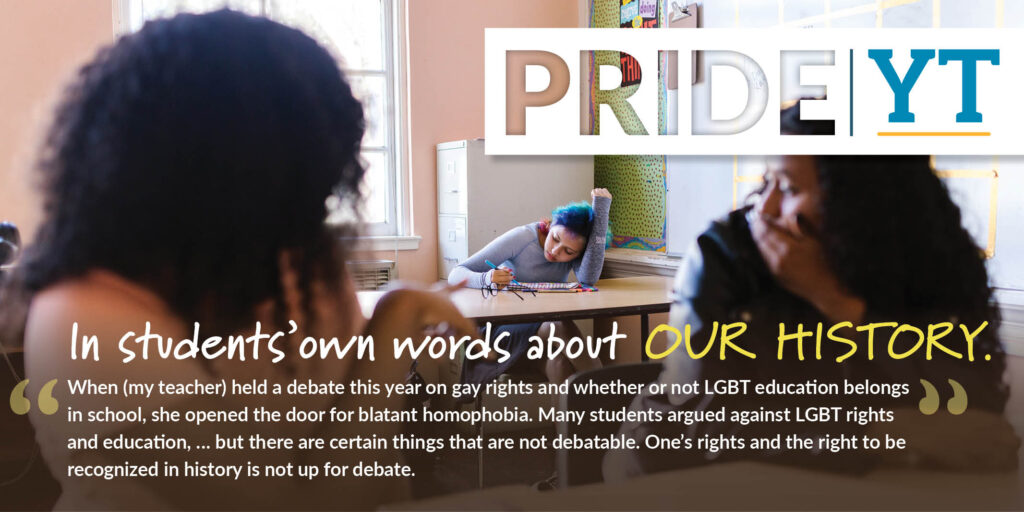

Directly counter to the movement to remove books from libraries and efforts to enshrine a version of America that ignores the contributions of LGBTQ+ artists and activists, these students demand the right to equal representation in what they are learning. It should concern us all that only 22 percent of LGBTQ+ high school students reported that what they learn in class connects to their lives outside of school.
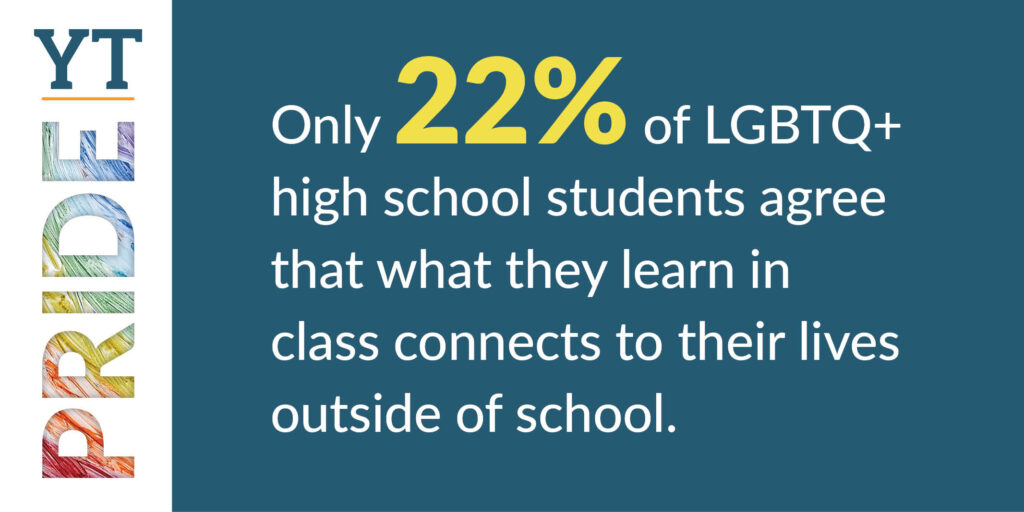
Value Our Identities
With a strong sense of exasperation LGBTQ+ students also asked that their identities be recognized and respected as part of the everyday life of school. They shared that:
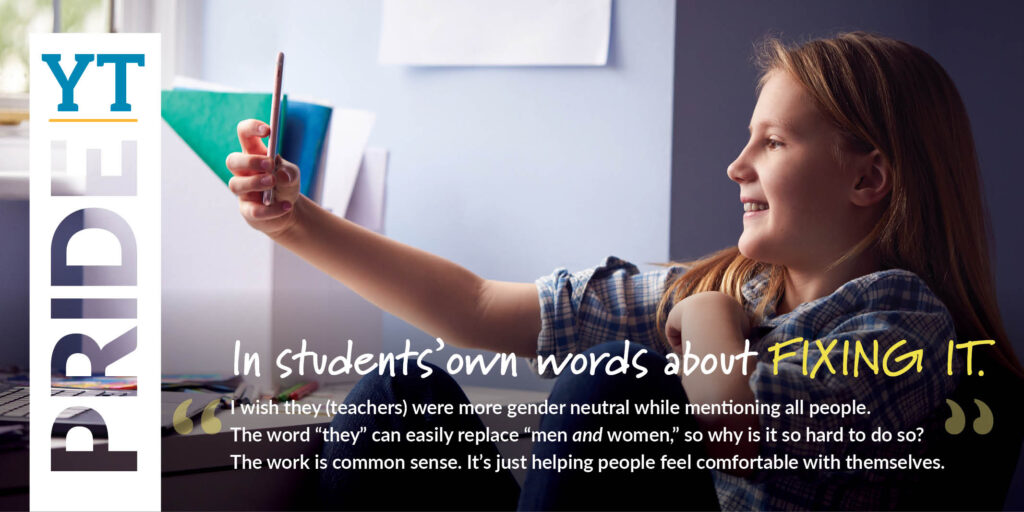

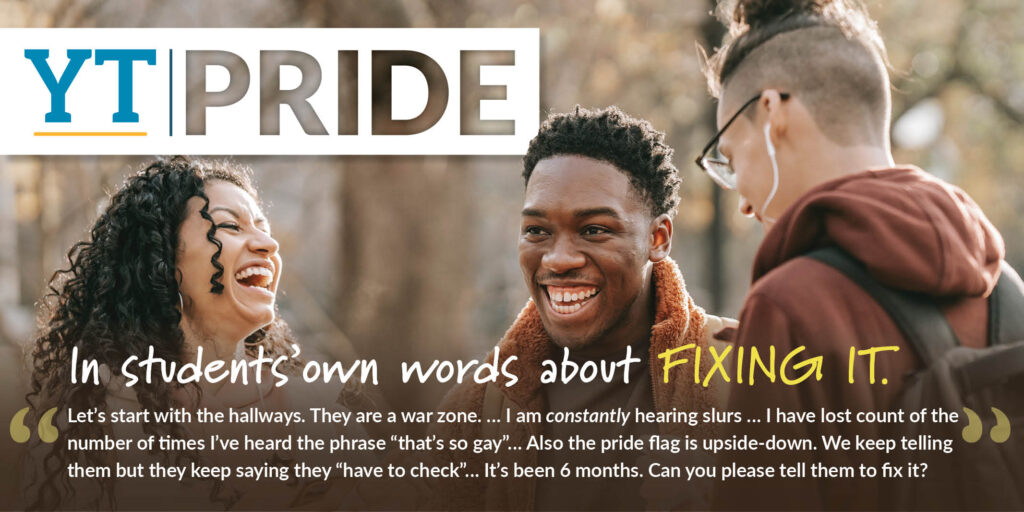
These seemingly simple requests are fraught even for teachers who want to be inclusive of all students’ identities. Even in places that have not legislated against inclusive classroom language teachers report being “extra careful” as they fear reprisal.
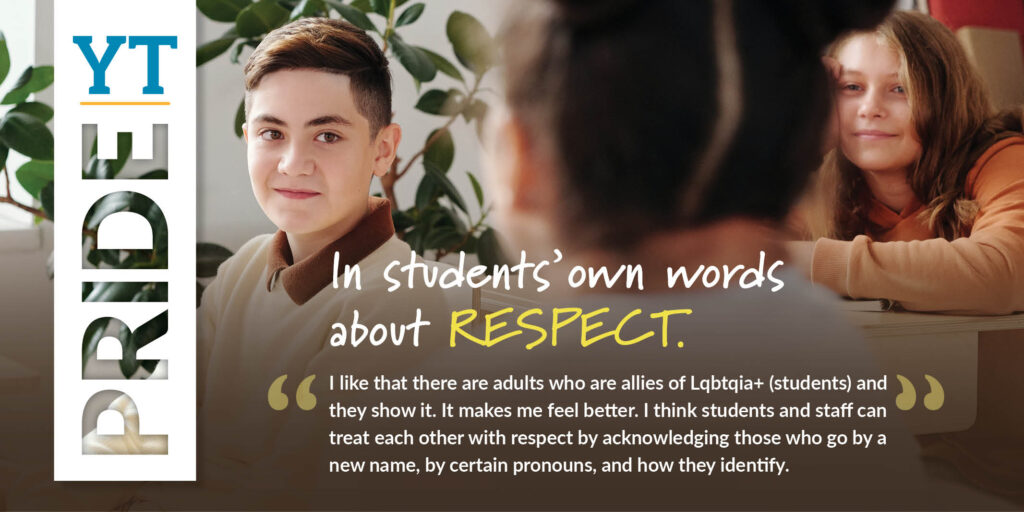
It should concern us all that the simple act of valuing a student’s identity requires an act of courage, and that only 33 percent of LGBTQ+ students report that they really feel like a part of their school’s community.

Value Our Lives
Finally, LGBTQ+ youth ask for the fundamental right to attend a school that is safe. There is still a lot of work to do here. Consider that only half, 52 percent, of LGBTQ+ students reported feeling safe during school. Also, when LGBTQ+ students are bullied they report that 60 percent of the time it is because of their sexual orientation.
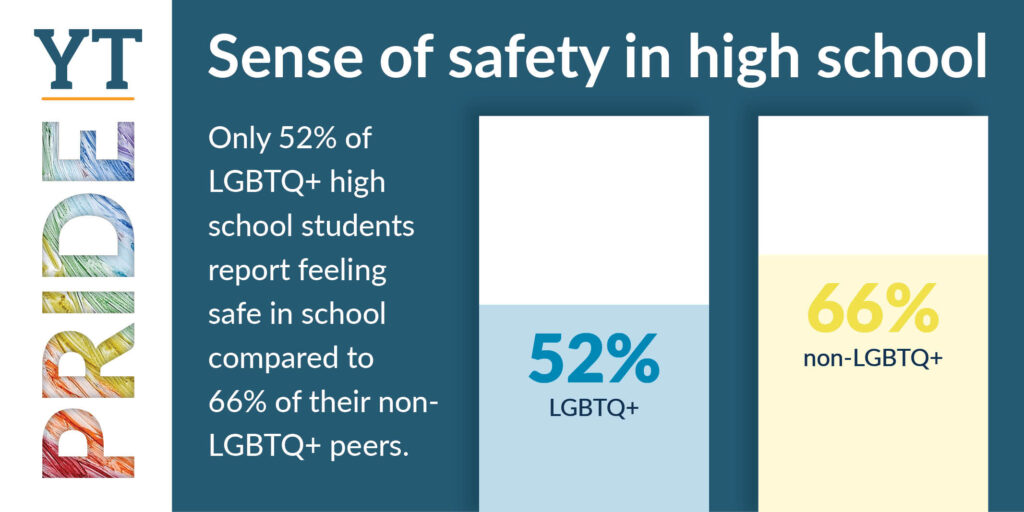
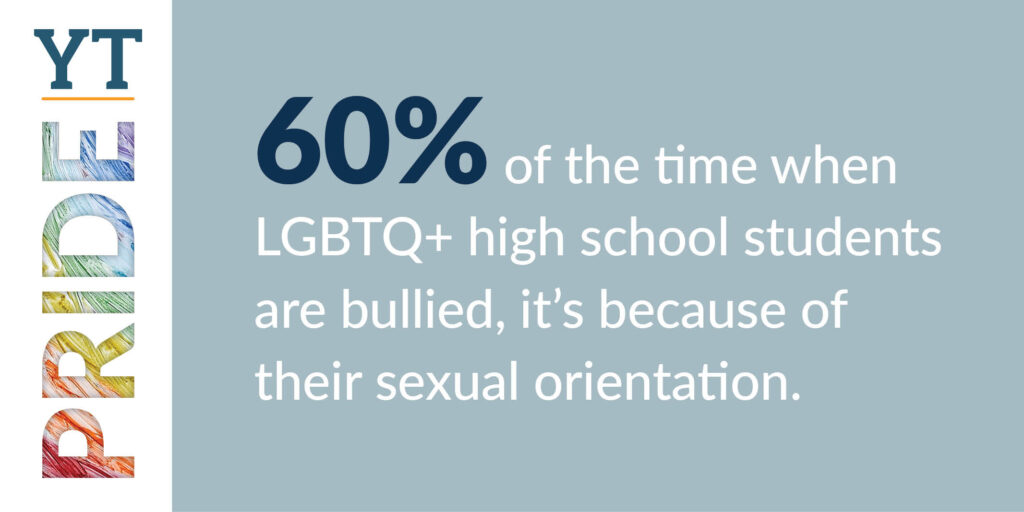
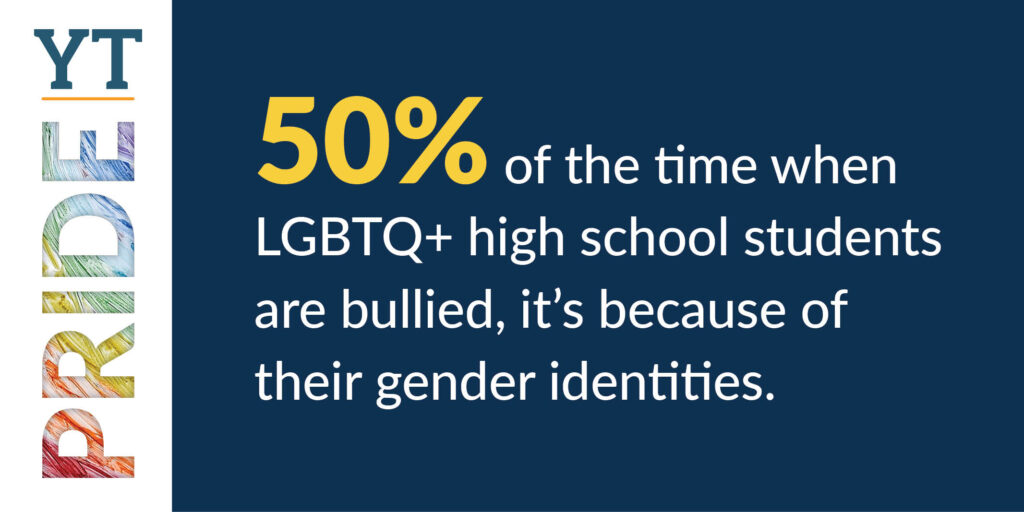
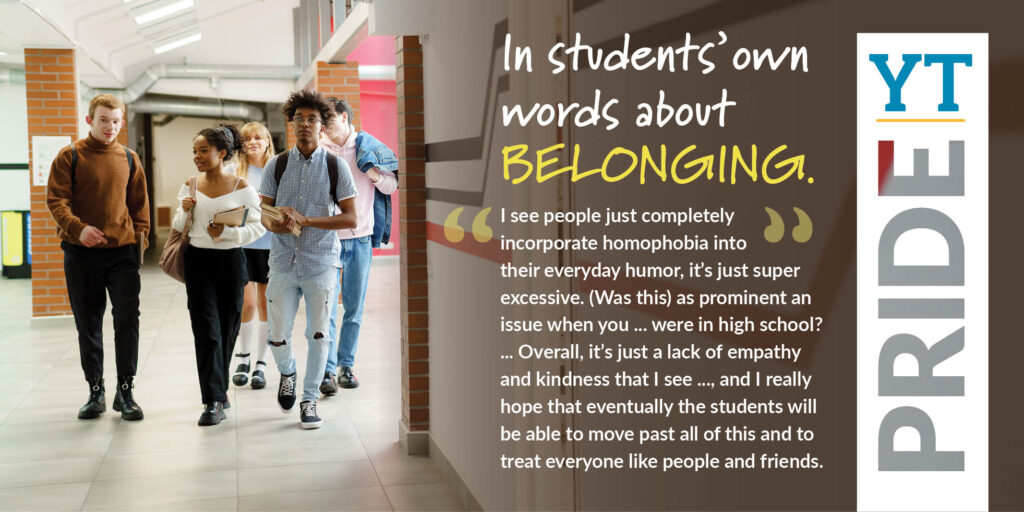
As one student put it, “I have faced extreme bullying … because I am transgender and queer… I love my school, and I’d never want to leave but even typing this out is making me nervous about who is looking over my shoulder. Something needs to be done.” Students also make the reasonable request that school staff “stop brushing off” anti-LGBTQ+ bullying “as a one-time mistake” and recognize when it is a dangerous symptom of a school culture that demands concerted attention.
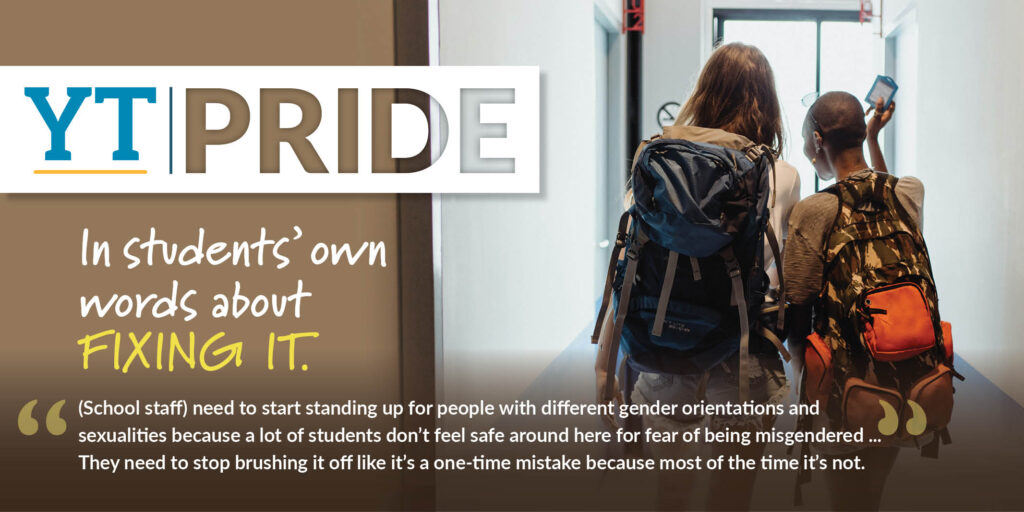
Indeed, we at YouthTruth have often remarked that even as LGBTQ+ students tend to report higher than average levels of engagement with their learning and academic challenge, they are more likely to also report that they have considered dropping out of school. In the 2021-2022 school year a full quarter of LGBTQ+ seniors reported that they had considered dropping out of school. For transgender students the number was even higher — a whopping 37 percent. And, keep in mind, we were only able to ask this question of those students who had made it to their senior year in school districts that chose to opt into a question about LGBTQ+ identity on the YouthTruth survey.
When the plane landed and the final few minutes of Heartstopper concluded, I came back down to Earth. As passengers hurriedly deplaned, I reflected again on the legislation to ban LGBTQ+ history and deny queer youth their existence by excluding them from curriculum and conversation in schools. I thought about white nationalists storming public library story hours hosted by beautiful drag queens. I also thought about ally and LGBTQ+ teachers getting fired. I thought about the Pride celebrations that happened all over the country last month and the fact that so many attendees were fearful of physical violence, rather than feeling a sense of liberation. And I wondered, what is the coming school year going to be like for LGBTQ+ students in states where repressive legislation is now the law?
Shows like “Heartstopper” tell stories that are needed in today’s world. But LGBTQ+ youth deserve so much more from us all, particularly in the place that we require them to spend most of their waking hours. At the very least, they deserve schools where they are safe, respected, and have the opportunity to learn about themselves. And funders have an opportunity to play an important role in making this a reality — at the very least by embracing a grantmaking approach that is inclusive of youth voices and that demonstrates a commitment to student agency. As one student recently put it, “You can’t help the kids, if you don’t know what the kids want.”
Finally, as we often remind ourselves, we urge funders to keep in mind that taking kids seriously can have an impact that goes way beyond the American schoolhouse. Consider that four million students are projected to turn 18 this year making them eligible to join the ranks of voters. We should all want LGBTQ+ youth — all youth — to come of age in schools where they see themselves as valued members who can contribute to our national story. That requires that funders make a long-term commitment to inviting youth into our philanthropic traditions. Now that would be a heartstopper.
Jimmy Simpson, Jr., is senior manager of partnerships at YouthTruth. Jennifer de Forest, Ed.D., is director of organizational learning and communications at YouthTruth.
- YouthTruth’s school district partners are encouraged to opt in to a demographic question on the survey of the student experience for secondary students. From October 2021 to May 2022, 77,160 high school students responded to the question “Do you identify as a member of the LGBTQIA+ community?” 15,179 students (19.67 percent) responded “Yes”. ↩︎


